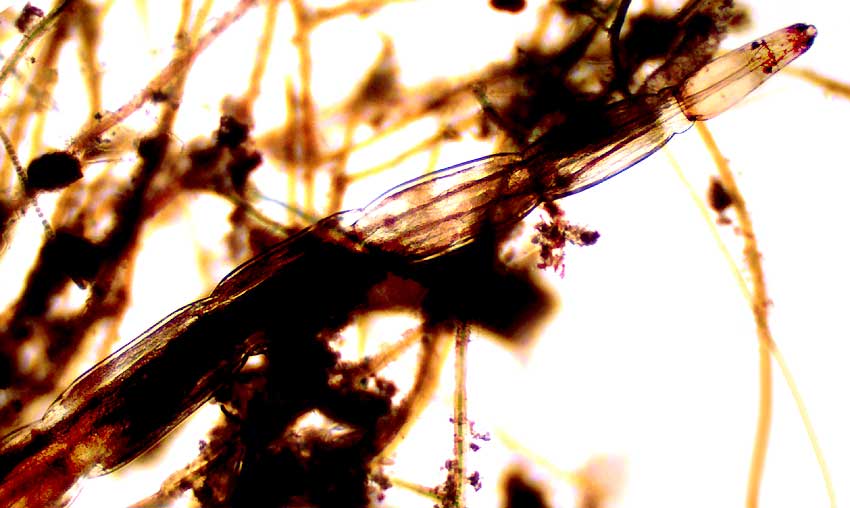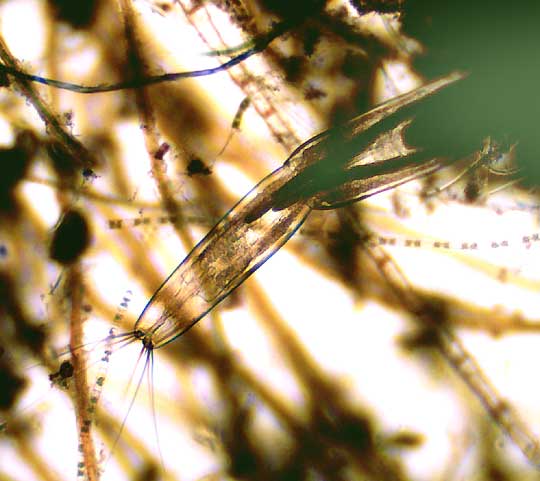Excerpts from Jim Conrad's
Naturalist Newsletter

from the March 10, 2013 Newsletter issued from the valley of the Dry Frio River in northern Uvalde County, southwestern Texas, on the southern border of the Edwards Plateau; elevation ~1750m (~5750 ft); N29.62°, W99.86°; USA
BITING MIDGE LARVA
Exactly as the contents of this week's drop of water from the little Dry Frio River behind the cabin came into focus, a snake-like head thrust from an algae jungle across my field of vision, causing my head to jerk back as if I'd spotted a cottonmouth at my feet and not a microscopic entity among algae filaments quietly puddled on a glass slide. That's the front end of my "snake" above.
Calming down and wanting to see how long the critter was I followed its segmented body backwards, looking for the tail. However, the body disappeared into a black tangle of algae and debris, though at the far end of the debris there emerged what surely was my snake's rear end, similarly segmented and mostly transparent, as shown below:

It's hard to say but I'm guessing that the "snake" was two or three millimeters long (1/8th inch). But, what was it?
The creature's leglessness, its segmentation, its mostly transparent body, and those bristles on its rear end first led me to think I might have a bristleworm -- a polychaete. However, no polychaetes were found with such rear-end bristles, and few polychaetes have eyespots.
Eventually I remembered how certain aquatic insect larvae possess such bristles so I began searching for images of larvae of very small insects I knew to hang about wetlands, and before long the right picture came up: I had the aquatic larva of a biting midge, also sometimes referred to as a no-see-um, midgy, sand fly, punky and by many other names. We're talking about those tiny, black things whose blood-sucking bites hurt all out of proportion to their miniscule size, and which in some areas near wetlands makes life miserable for people and other animals. Biting midges, of which many species are recognized, are members of the Biting Midge Subfamily, the Ceratopogoninae, with appears in the Fly Order, the Diptera. Biting midge larvae are mostly predaceous on other small aquatic animals, and themselves are eaten by animals larger than themselves, including small fish.
I can't find an explanation for our larva's rear-end bristles -- referred to as anal bristles by some -- but I have a theory about why they might be useful. The larva's body is stiffer than a snake's and thus can't undulate like a snake, whose coils propel the snake's body forward by pushing backwards against irregularities on the ground. However, the larvae's anal bristles might anchor the rear end of a larva among tangles of algae as the front end thrusts forward to attack prey.